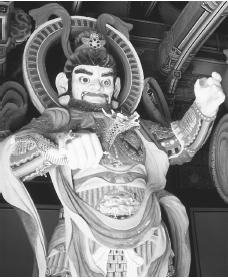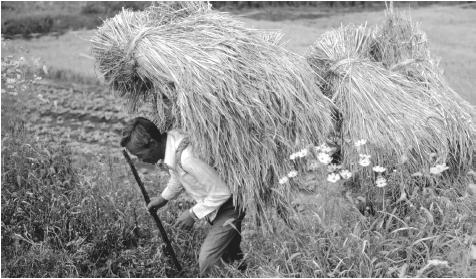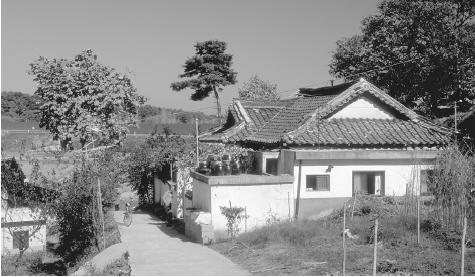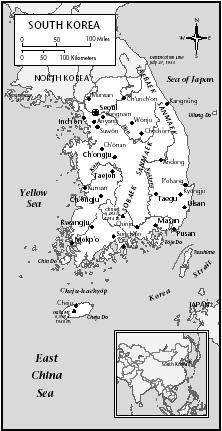I love you so neobakk-e eobs-eo gajinge eobs-eoseo gyeolgug joegadwaess-eo handong-an cham manh-i himdeulgessji hajiman eojjeogess-eo neo ppun-ingeol L.O.V.E saeng-gagboda gip-eunnaesarang-i wae ireohge him-ideunji sum-imaghine dabdabham-i hyeokkeutkkaji chaoreune nunmulmajeo mareune ulgo bulgo maedallyeobwassaja heos-sugo neoi dasi chaj-euryeogo dasi kkugkkugchamgo naeoeroun nalseul-eun hanpyeon-ui deurama nae apeun nae iyagineun jebal deo isang mudjima ije hwagsirhi naemam-eul boyeojulteni neon naegero gakkaigin mal pil-yoeobs-i geuraedo namjanikka neoreul saranghalkke geuraedo namjanikka neoreul gidarilkke
Tell me why nal beoryeoss-eo (sewol-i byeonhaedo nan neobakk-eneun eobs-eo) geunyang sarang-e nal deonjyeoss-eo (gajingeon eobs-eodo nan neobakk-eneun eobs-eo) michideus neol saranghaesso (sewol-i byeonhaedo nan neobakk-eneun eobs-eo) nae insaeng neol wihae da geol-eoss-eo (gajingeon eobs-eodo nan neobakk-eneun eobs-eo) neolbaramanbomyeo sarangmanbaeulkke geugeosmajeo silhdamyeon nayeogsi neol-ij-eulkke geureohge namjadabge neol saranghaess-eossne oerobge ttaeroneun chorahage neol saranghaess-eossne gajingeon-eobsgo chubgo baegopeun saenghwal-ui yeonsog hajiman neol gajigo issdaneun o saeng-gag-e naemansong-e kkochpineun bomnal-i gadeughae neoman-eul saranghae (saranghae) sarang-eunkeojyeo gyeolgug neoege budam-i sangsang-i mandeul-eonaen gamjeong-ui jibchag-i gyeolgug neoege mugeounsarang-ui jim-i jisogdoen ibyeol-iran jongchag-yeog-e dahged waess-eum-i nae sogdo moreugo mamdo moreugo sarang-eul beorilttae nae sogdo moreugo mamdo moreugo gaseum-i jjij-eojyeo nae sogdo moreugo mamdo moreugo sarang-eul beorilttae nae sogdo moreugo mamdo moreugo gaseum-i jjij-eojigo
Tell me why nal beoryeoss-eo ( sewol-i byeonhaedo nan neobakk-eneun eobs-eo) geunyang sarang-e nal deonjyeoss-eo (gajingeon eobs-eodo nan neobakk-eneun eobs-eo) michideus neol saranghaessgo (sewol-i byeonhaedo nan neobakk-eneun eobs-eo) nae insaeng neol wihae da geol-eoss-eo
Tell me why sarang-iran (naesogdo moreugo mamdo moreugo sarang-eul beorilttae gaseumsong-e dabdabham-e nunmul-i heureugo) ma-eumhanareul dadjimoshae (naesogdo moreugo mamdo moreugo sarang-eul beorilttae ontong neoui saeng-gag-e jam mos irugo) neo moreudeus nal tteonado (naesogdo moreugo mamdo moreugo sarang-eul beorilttae nae sogdo moreugo mamdo moreugo gaseum-i jjij-eojyeo) nae insaeng neol wihae da jueoss-eo (nae sogdo moreugo mamdo moreugo sarang-eul beorilttae nae sogdo moreugo mamdo moreugo gaseum-i jjij-eojigo)
Tell me why nal beoryeoss-eo (geuraedo namjanikka neoreul saranghalkke) geunyang sarang-e nal deonjyeoss-eo (geuraedo namjanikka neoreul gidarilkke) michideus neol saranghaessgo (geuraedo namjanikka neoreul saranghalkke) nae insaeng neol wihae da geol-eoss-eo (geuraedo namjanikka neoreul gidarilkke)
geuriwo neoui sumgyeol hyang-giga geuriwo seolleyeossdeon cheos neukkim geuriwo cheos mannam-ui misoga geuriwo niga issdeon sungan-i geuriwo neoui sumgyeol hyang-giga geuriwo seolleyeossdeon cheos neukkim geuriwo cheos mannam-ui misoga geuriwo geuriwo
------------------------------------------------------------------
English translation:
I love you so I have no one but you I had nothing and that became a sin For a long time it will be hard But what can I do, I only have you L.O.V.E my love is deeper than I thought But why is it so hard? I can't breath, frustration is on the tip of my tongue, tears flow It's no use to cry and yell and cling Instead I bore with it, trying to find you again My lonely days are like scenes from a drama Don't ask anymore of my painful story I will show you my heart again You just need to be close to me, without any explanation Because I'm a guy I will love you Because I'm a guy I will wait for you
Don't tell me why You left me, you threw me away who was in love I loved you like I was crazy I put my whole life into you
I will look upon you and learn what love is If you don't like that, I will forget you I loved you like this, like a man I loved you sometimes miserably My life was contingent of coldness and hunger But the thought of having you makes flowers bloom like spring in my heart I love you, only you (I love you) My love grows big, and eventually makes you uneasy My obsession of emotions created by my imagination Became a heavy burden of love to you Separation becomes continuous
When I throw away love without anyone knowing my heart or my feelings My heart rips in two without anyone knowing my heart or feelings When I throw away love without anyone knowing my heart or my feelings My heart rips in two without anyone knowing my heart or feelings
Don't tell me why You left me, you threw me away who was in love I loved you like I was crazy I put my whole life into you
Because I'm a guy I will love you Because I'm a guy I will wait for you Because I'm a guy I will love you Because I'm a guy I will wait for you
I miss the scent of your breath I miss the fluttering feeling I miss the smile of our first meet I miss the moment when you were here
Tell me why nal beoryeoss-eo (sewol-i byeonhaedo nan neobakk-eneun eobs-eo) geunyang sarang-e nal deonjyeoss-eo (gajingeon eobs-eodo nan neobakk-eneun eobs-eo) michideus neol saranghaesso (sewol-i byeonhaedo nan neobakk-eneun eobs-eo) nae insaeng neol wihae da geol-eoss-eo (gajingeon eobs-eodo nan neobakk-eneun eobs-eo) neolbaramanbomyeo sarangmanbaeulkke geugeosmajeo silhdamyeon nayeogsi neol-ij-eulkke geureohge namjadabge neol saranghaess-eossne oerobge ttaeroneun chorahage neol saranghaess-eossne gajingeon-eobsgo chubgo baegopeun saenghwal-ui yeonsog hajiman neol gajigo issdaneun o saeng-gag-e naemansong-e kkochpineun bomnal-i gadeughae neoman-eul saranghae (saranghae) sarang-eunkeojyeo gyeolgug neoege budam-i sangsang-i mandeul-eonaen gamjeong-ui jibchag-i gyeolgug neoege mugeounsarang-ui jim-i jisogdoen ibyeol-iran jongchag-yeog-e dahged waess-eum-i nae sogdo moreugo mamdo moreugo sarang-eul beorilttae nae sogdo moreugo mamdo moreugo gaseum-i jjij-eojyeo nae sogdo moreugo mamdo moreugo sarang-eul beorilttae nae sogdo moreugo mamdo moreugo gaseum-i jjij-eojigo
Tell me why nal beoryeoss-eo ( sewol-i byeonhaedo nan neobakk-eneun eobs-eo) geunyang sarang-e nal deonjyeoss-eo (gajingeon eobs-eodo nan neobakk-eneun eobs-eo) michideus neol saranghaessgo (sewol-i byeonhaedo nan neobakk-eneun eobs-eo) nae insaeng neol wihae da geol-eoss-eo
Tell me why sarang-iran (naesogdo moreugo mamdo moreugo sarang-eul beorilttae gaseumsong-e dabdabham-e nunmul-i heureugo) ma-eumhanareul dadjimoshae (naesogdo moreugo mamdo moreugo sarang-eul beorilttae ontong neoui saeng-gag-e jam mos irugo) neo moreudeus nal tteonado (naesogdo moreugo mamdo moreugo sarang-eul beorilttae nae sogdo moreugo mamdo moreugo gaseum-i jjij-eojyeo) nae insaeng neol wihae da jueoss-eo (nae sogdo moreugo mamdo moreugo sarang-eul beorilttae nae sogdo moreugo mamdo moreugo gaseum-i jjij-eojigo)
Tell me why nal beoryeoss-eo (geuraedo namjanikka neoreul saranghalkke) geunyang sarang-e nal deonjyeoss-eo (geuraedo namjanikka neoreul gidarilkke) michideus neol saranghaessgo (geuraedo namjanikka neoreul saranghalkke) nae insaeng neol wihae da geol-eoss-eo (geuraedo namjanikka neoreul gidarilkke)
geuriwo neoui sumgyeol hyang-giga geuriwo seolleyeossdeon cheos neukkim geuriwo cheos mannam-ui misoga geuriwo niga issdeon sungan-i geuriwo neoui sumgyeol hyang-giga geuriwo seolleyeossdeon cheos neukkim geuriwo cheos mannam-ui misoga geuriwo geuriwo
------------------------------------------------------------------
English translation:
I love you so I have no one but you I had nothing and that became a sin For a long time it will be hard But what can I do, I only have you L.O.V.E my love is deeper than I thought But why is it so hard? I can't breath, frustration is on the tip of my tongue, tears flow It's no use to cry and yell and cling Instead I bore with it, trying to find you again My lonely days are like scenes from a drama Don't ask anymore of my painful story I will show you my heart again You just need to be close to me, without any explanation Because I'm a guy I will love you Because I'm a guy I will wait for you
Don't tell me why You left me, you threw me away who was in love I loved you like I was crazy I put my whole life into you
I will look upon you and learn what love is If you don't like that, I will forget you I loved you like this, like a man I loved you sometimes miserably My life was contingent of coldness and hunger But the thought of having you makes flowers bloom like spring in my heart I love you, only you (I love you) My love grows big, and eventually makes you uneasy My obsession of emotions created by my imagination Became a heavy burden of love to you Separation becomes continuous
When I throw away love without anyone knowing my heart or my feelings My heart rips in two without anyone knowing my heart or feelings When I throw away love without anyone knowing my heart or my feelings My heart rips in two without anyone knowing my heart or feelings
Don't tell me why You left me, you threw me away who was in love I loved you like I was crazy I put my whole life into you
Because I'm a guy I will love you Because I'm a guy I will wait for you Because I'm a guy I will love you Because I'm a guy I will wait for you
I miss the scent of your breath I miss the fluttering feeling I miss the smile of our first meet I miss the moment when you were here




